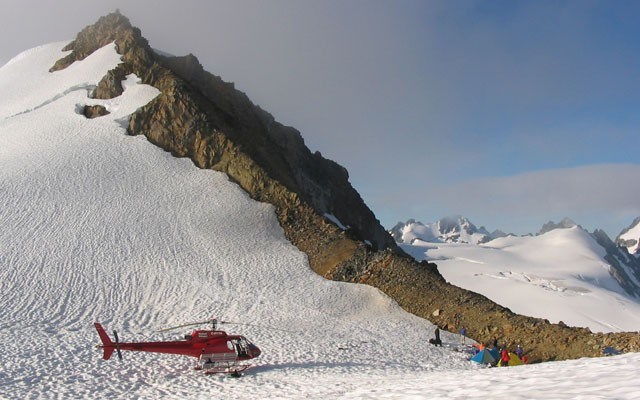Whistler Search and Rescue is looking for help as it readies plans for a more than $300,000 communications upgrade in the busy backcountry, including the Spearhead Traverse.
After three years of discussions and planning, the project to improve backcountry communication for search and rescue personnel will get started by mid-September.
Phase one is the $80,000 replacement of the mast atop the Whistler Mountain radio tower. The new mast, with some new electronic equipment, will improve communication coverage between SAR personnel by linking existing Whistler and Callaghan Valley sites. At the same time, the existing tower on Sproatt Mountain, which is leftover from the 2010 Winter Olympic Games, will also be updated.
"One of the riskiest things when you are out looking for someone is communications, and one thing that fails on us probably nine times out of 10 is communications," said Greg Newton, director and treasurer of WSAR.
About 40 per cent of the rescues currently performed by the 24 Whistler rescuers are from areas in the valley where there is no communication, according to WSAR manager Brad Sills.
The way rescuers currently find out about those who are hurt or missing is often when mountain adventurers don't come home.
"It is not good for either the people that are in trouble or the people who are going in to get them, " Sills said.
Whistler SAR currently has three radio "repeater" towers: the Whistler Mountain tower, which gives coverage for most of the valley except the Cheakamus Lake area, the tower on Sproatt Mountain that provides coverage of the Callaghan Valley and a third "cross band" repeater that is also on Whistler Mountain. The cross band tower allows for communication with helicopters.
Repeater towers are about nine-metres high, and less than a metre in diameter, thin, cone-shaped towers that allow for communication between two or more bases.
None of the repeaters are linked, which means rescuers out in the field can't communicate with each other at all in some areas.
Once phase one of the upgrades is complete, phase two will be putting a new tower in the upper Cheakamus Lake region, a remote area of Garibaldi Provincial Park.
"The only way that we can currently communicate with [rescue personnel or victims] is to have a helicopter continuously flying overhead, which is very expensive," Sills said.
Phase three is proposed to be a tower at Wedge Peak, providing coverage of popular ski-touring routes on area glaciers, including Spearhead Glacier in the Spearhead Range. This area is currently accessed off of Blackcomb Glacier.
The Spearhead Hut proposal — to place several huts equipped with heat, water, toilets and cooking facilities in the Spearhead Traverse — has been given the go-ahead from BC Parks. The project will significantly increase the number of people in the backcountry and the need for better communication in the area, according to Sills.
Once the entire upgrade and new tower project is complete, there will be a single radio network that SAR members will be able to access and seamlessly connect with any other Whistler search and rescue personnel, the SAR base and the helicopter base.
The approximate total cost of upgrading the communication system is over $300,000, and will be phased in gradually over the next three years as funds become available through the Whistler Search and Rescue Society.
To aid in the fundraising effort, some monies from the society's 15th annual Winemakers' gourmet dinner and auction "Wine'd up" on Oct. 18 will be directed towards the project.
The popular fundraiser includes a five-course dinner and live and silent auctions at Dusty's Bar & BBQ, in Whistler Creekside. Reception and hors d'oeuvres start at 6 p.m. Tickets are $170 plus GST and go on sale Sept. 1.
For tickets call Whistler Blackcomb at 1-800-766-0449 ext. 2.




